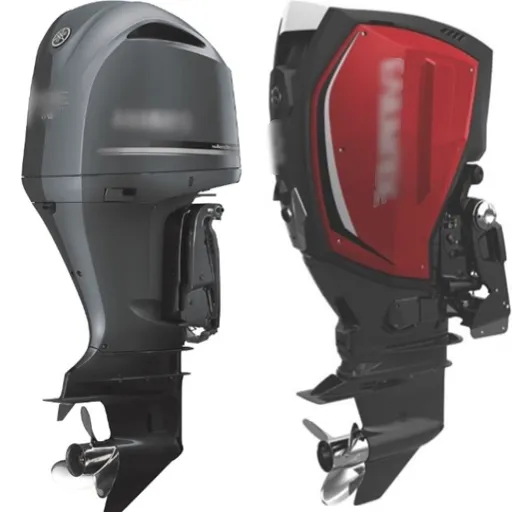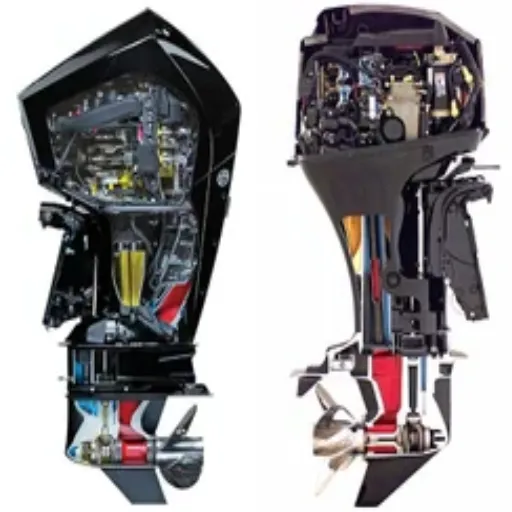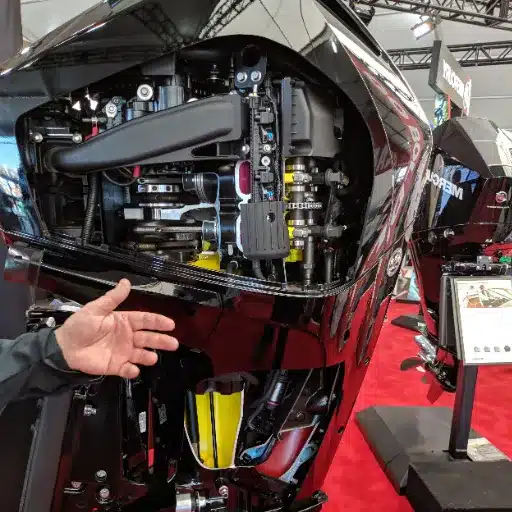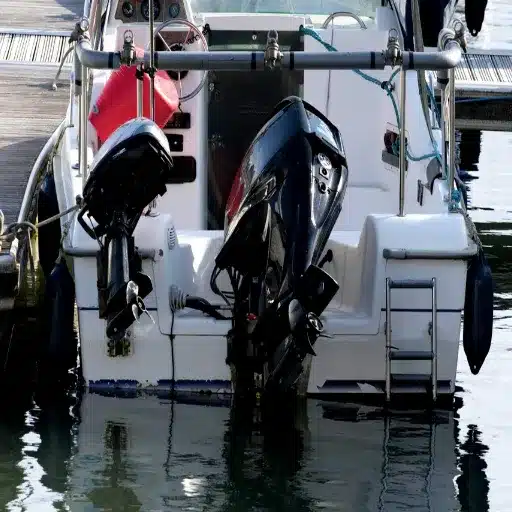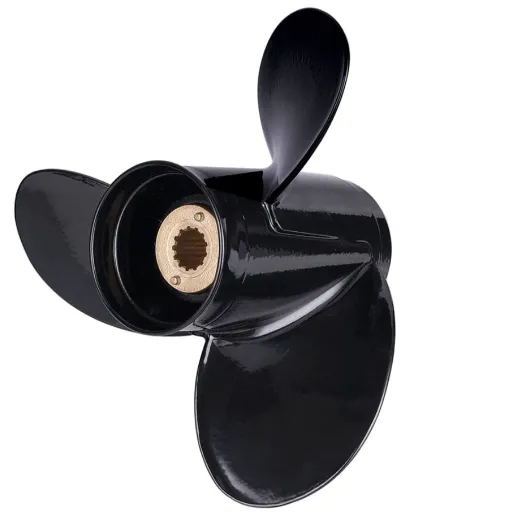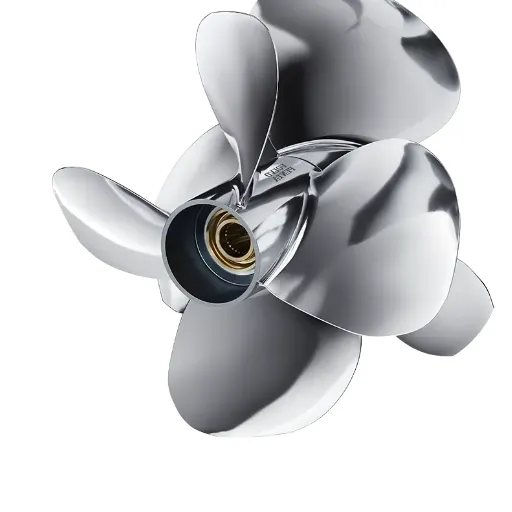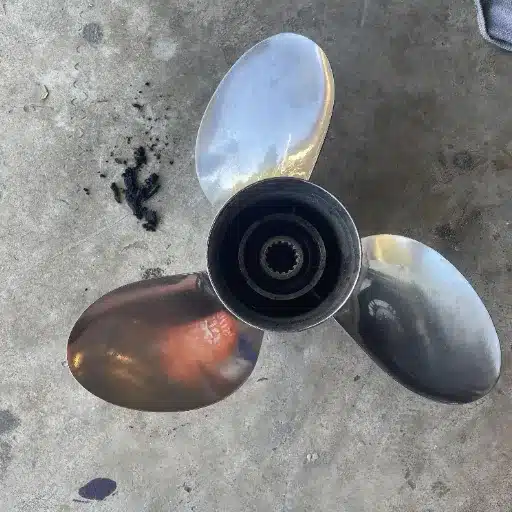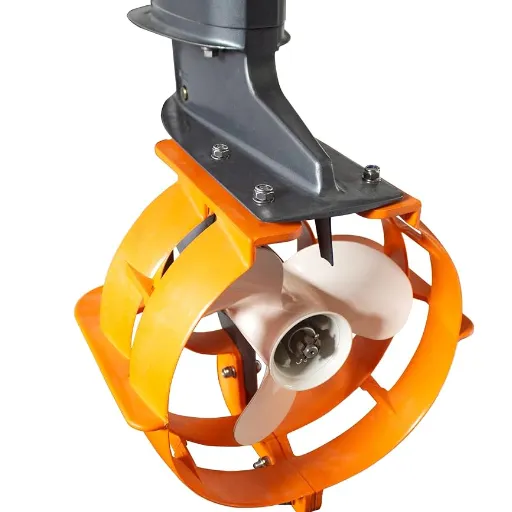The decision of which motor is right for a boat presents challenges for any boat owner; the 2-stroke vs. 4-stroke debate remains active in 2025 as it has for decades. Technologies in marine development have led to changes in the designs of both motor types, aiming to improve performance, enhance fuel efficiency, and reduce negative environmental impact, as each motor type may serve different purposes or needs. How would you go about deciding which motor is best suited to your boating needs? Here, we discuss the advantages and disadvantages of 2-stroke versus 4-stroke boat motors, providing clear clarification on their pros, cons, and best uses. Whether enjoying recreational time on a boat or chartering deep waters in search of adventure, this guide will help keep you informed for a viable, well-informed decision.
Understanding the Basics of Outboard Motors
2-Stroke Outboard Engine
From the physiologic definition, it can be said that a 2-stroke outboard motor is an internal combustion machine designed to complete one power cycle in only two piston strokes during a single crankshaft revolution. This four-bar design achieves a significantly improved power-to-weight ratio, enabling a compact structure that boaters often appreciate when seeking speed and agility. These engines differ from their 4-stroke counterparts in that 2-stroke engines mix fuel with oil for lubrication. This makes the entire process simpler and results in an engine with fewer moving parts.
The latest developments in 2-stroke technology, such as direct fuel injection, have enhanced the engines’ efficiency and reduced emissions to meet environmental standards. According to recent studies, these technologies can favorably influence fuel consumption by as much as 25% compared to older engines, with an additional drastic reduction in hydrocarbon emissions. On the other hand, 2-stroke motors tend to be noisier, require more frequent servicing due to their higher RPMs, and may incur higher repair costs over time. These higher operational noises and costs are considerable drawbacks, thus making these applications less preferable in nature, particularly where performance and portability are uppermost priorities, such as smaller boats or sporty recreational activities.
4-Stroke Outboard Motor
A 4-stroke motor is a complex engine designed to operate with utmost efficiency, dependability, and environmental friendliness. Unlike 2-stroke motors that fire every revolution of the crankshaft, the 4-stroke engine completes its power stroke in four stages: intake, compression, power, and exhaust. For this reason, the machine runs quieter and is safer for the environment, with reduced fuel consumption. This option is particularly appealing to those who are environmentally conscious or seek fuel savings in the long run.
Modern 4-stroke outboard motors come equipped with technologies such as electronic fuel injection (EFI), which prepares an optimal mix of air and fuel to produce maximum power output with minimal fuel consumption. These engines require less frequent maintenance due to their lower RPM levels, resulting in reduced wear and tear on internal components. Typically, these engines tend to be more massive and costlier upfront than their 2-stroke counterparts. Still, due to their sheer longevity and cost efficiency, they are suitable for large boats, casual fishing, and similar activities where smooth and steady driving is required.
Key Differences Between 2-Stroke and 4-Stroke
Some primary differences between 2-stroke and 4-stroke engines stem from their performance, maintenance requirements, fuel efficiency, and usability. Knowing the difference can help users find the right engine according to their needs.
Power Output and Efficiency
A 2-stroke engine fires once every revolution, while a 4-stroke fires once every two revolutions. Therefore, 2-stroke engines offer maximum power relative to their size and weight, making them suitable for high-speed applications in smaller boats or personal watercraft. At the same time, 4-stroke engines are designed to consume fuel efficiently and provide smooth, continuous power, making them best suited for heavier boats and extended periods of use.
Fuel Economy
The next consideration is fuel economy when choosing an engine type. Generally, 4-stroke engines are more fuel-efficient than 2-stroke engines, as they burn fuel completely during the combustion process. The complexity-to-power ratio of 2-stroke engines, however, means that they consume more fuel and emit far more exhaust, making them a less environmentally friendly option.
Maintenance Requirements
A two-stroke engine, being a simpler mechanical design with fewer moving parts, is typically easier and less costly to repair. Yet, maintenance is frequent, as they burn oil with fuel that leads to wear and tear faster. Four-stroke engines feature an enclosed oil system, which results in reduced wear and tear over time, and typically have longer maintenance intervals; however, they are more costly to maintain due to their complex design.
Durability and Longevity
This feature is a hallmark of 4-stroke engines. Their slow operation places slight pressure on the components; as a result, they are held to higher standards over time regarding durability. On the other hand, two-stroke engines offer a lighter design and compact form; however, their short life expectancy and high susceptibility to wear can render them less economical over a prolonged period.
Environmental Impact
Regulatory standards in various industries often favor 4-stroke engines due to their low-emission nature. Since neglecting complete combustion in a 4-stroke engine results in fewer pollutants, environmental disciplines favor them. The skies fill with fumes from two-stroke engines, and existing regulations could limit the use of 2-stroke engines.
Initial Cost Vs. Long-Term Investment
Since 2-stroke engines are generally cheaper to purchase, they become attractive options for those on a tight budget or for whom application time is limited. It will ultimately consume your money due to high fuel consumption and frequent maintenance. On the higher façade, 4-stroke engines would initially appear more expensive. Still, in terms of efficiency, useful life, and ease of operation, they undoubtedly outshine the others as a long-term investment.
Ultimately, the choice between 2- and 4-stroke engines will depend on specific user requirements, including the economic benefits of the engine and considerations such as fuel efficiency, ecology, and maintenance. The two types of engines pose different advantages. Hence, one must carefully consider these factors before making a decision.
Performance Comparison: Torque and Power Ratings
| Performance Factor | 2-Stroke | 4-Stroke |
|---|---|---|
| Power-to-Weight Ratio | Higher | Lower |
| Torque at Low RPM | Excellent | Good |
| Power Delivery | Quick bursts | Steady, consistent |
| Acceleration | Superior | Moderate |
| Power Density Advantage | Up to 30% more | Baseline |
The Torque Characteristics of 2-Stroke Outboards
Two-stroke outboards, known for their high torque at low RPMs, enable them to be used in situations that require a strong initial thrust. Because it is light, it provides a better power-to-weight ratio, which makes it crucial that the boat has a fast planing time, as such watercraft may be used for fishing, sports, or any activity that requires a prompt response.
Industry analysts state that modern 2-stroke outboards utilize technologies, such as direct fuel injection (DFI), that maximize torque output while also considering fuel efficiency. For example, some models can achieve up to 30% more power density compared to a typical 4-stroke engine. Also, a lighter engine translates directly to better handling and acceleration, especially for smaller and medium-sized boats.
This feature provides two strokes with the finest power option in every situation where great demand is placed on the motor, such as towing skiers or navigating through rough waters. Hence, sacrifice should be weighed against emissions and fuel consumption for assessing long-term operability.
Power Ratings of 4-Stroke Outboards
Four-stroke outboard engines have long been recognized for their steady and consistent power output. Therefore, they lend themselves well to different types of boating applications. These engines offer a wider power band, providing steady performance across various operational conditions. The higher power rating stems from its advancements, which have been modernized significantly over the years. Some models now range from 2.5 horsepower for smaller boats all the way up to over 400 horsepower for the faster and heavier boats.
The design is intended to enhance torque delivery from 4-stroke engines, which is particularly useful during long-distance cruising or when carrying heavier loads. The design is followed by fuel injection systems that enable the combustion process to produce more energy. Hence, this innovation helps slightly increase engine performance while simultaneously decreasing fuel consumption, thereby reducing the need for additional power from fuel. For any operator requiring high power while maintaining good fuel efficiency, the 4-stroke outboard motor represents an excellent compromise, suitable for a wide range of boating activities.
Which motor offers better performance?
When compared to each other, 2-stroke and 4-stroke outboard motors must take into consideration several key factors, including power delivery, fuel consumption, and maintenance. A 2-stroke motor is generally simple in design and produces more power for its weight. Hence, 2-stroke motors find applications in areas that demand short bursts of acceleration and speed, such as water sports or smaller boats. Meanwhile, 4-stroke engines offer refinement and consistency in performance and are adept at sustained operation, thanks to their advanced engineering, which results in lower noise levels.
Recent developments in four-stroke technology, such as direct fuel injection systems, have narrowed the performance gap, increasing power while reducing fuel consumption and emissions. On the other hand, 2-stroke engines remain competitive due to their lightweight design and improved efficiency, as well as their straightforward injection systems. Hence, 4-stroke engines typically exhibit significant torque at low RPM, which is ideal for operating larger or heavier vessels in varying conditions under steady propulsion. A 2-stroke engine, on the other hand, is often preferred by those who prioritize speed and a more compact build.
The ultimate decision between the two motor types is almost always dependent on the application. A case is given as an example, where weight is an issue and fast bursts of speed are required, 2-strokes are advantageous. On the other hand, 4-stroke engines offer better performance in terms of fuel efficiency, quieter operation, and greater durability.
Fuel Efficiency and Environmental Impact
Fuel Consumption of 2-Stroke Engines
The issue is that 2-stroke engines are known for their simplicity and lightness, but this comes with a problematic side, as fuel consumption is said to be higher than that of 4-stroke engines. The reason behind this is that the very design of two-stroke engines produces combustion by mixing oil with the fuel. Thus, in contrast with 4-stroke, 2-strokes lack septic lubrication systems so that fuel utilization is less efficient.
Fuel Consumption: 30-50% higher than comparable 4-stroke engines
For example, research has proven that 2-stroke engines consume more fuel by hours, sometimes estimated to be as much as 30 to 50 percent more fuel than similar-sized 4-stroke counterparts operating under similar conditions. This increased requirement for fuel is also causing higher emissions of unburned hydrocarbons, along with higher operational costs. Through technological improvements, an engine such as the modern 2-stroke engine, which uses direct fuel injection, has enhanced its efficiency, thereby reducing fuel consumption and environmental impact. However, traditional 2-stroke engines remain less environmentally friendly and less economical in the long term.
Cleaner and More Fuel Efficient: The 4-Stroke Advantage
Previously, it was a significant boon in terms of fuel economy and pollution control when 4-stroke engines emerged. Two-stroke engines are crude in that they depend on the oil-fuel mixing process, whereby a portion of the fuel remains unburnt. Thus, the 4-stroke engine separates the lubrication from the combustion process, ensuring cleaner combustion and fewer emissions of principal pollutants, namely carbon monoxide and unburned hydrocarbons.
Fuel Efficiency: 20-30% more efficient than 2-stroke engines
Reports indicate that 4-stroke engines are approximately 20-30% more fuel-efficient than 2-stroke engines, resulting in considerable savings over the engine’s lifespan. Additionally, 4-stroke engines offer better power control, a smoother operation, and a longer maintenance interval. The enhancement of technologies such as variable valve timing (VVT) and electronic fuel injection (EFI) has made modern 4-stroke engines not only highly energy-efficient but also compliant with stringent emission standards, making them ideal for both personal and commercial applications.
2025 Trends in Environmental Regulations for Boat Motors
The year 2025 marks a significant milestone in highlighting the ecological impacts of boat motors. With increasingly stringent standards on emissions being enforced for air and water pollutants worldwide, many countries are expected to adopt strong new laws to control nitrogen oxide (NOx) and particulate emissions, with a greater focus on greenhouse gas emissions. These measures henceforth impose limits on manufacturing in their technological progress toward cleaner technologies.
Electric & Hybrid Systems
Supported by battery storage capacity and charging infrastructure, they strive for zero emissions, achieving lower operational noise levels.
Low-Sulfur Fuels
Regulations are promoting the increased use of low-sulfur fuels in conventional engines, thereby significantly reducing harmful emissions.
Carbon Offset Requirements
Notable trend prompting companies to adopt renewable energy solutions and bear the costs of establishing carbon-neutral practices.
Component Recycling
Policies encouraging the recycling of engine components further illustrate the aggressive push toward a circular economy for marine manufacturing.
These developments represent shared momentum toward an environmentally responsible future, with regulations serving as the guiding axis for a sustainable boating industry.
Maintenance and Longevity of Outboard Motors
Maintenance Requirements for 2-Stroke Engines
- Spark Plugs: Regular checking and changing required to prevent misfiring
- Carburetors: Inspection and cleaning needed to ensure steady fuel flow
- Fuel Lines: Check for leaks or deterioration
- Cooling System: Flush after every use, especially in saltwater
- Lubrication: Apply to moving parts like throttle cable and steering mechanisms
- Lower Unit Oil: Periodic changes for internal component lubrication
Warning: Carbon deposits accumulate if fuel-to-oil mixture ratio is not accurately maintained, reducing engine efficiency and potentially causing damage.
Since the fuel-to-oil mixture ratio is not accurately maintained or changed, carbon deposits accumulate in large quantities, reducing engine efficiency and, at times, causing further engine damage. Annual professional servicing, which includes pressure testing and inspection of internal components, should further enhance the engine’s longevity. Therefore, by following these recommendations, 2-stroke engine owners can minimize repair costs while maintaining their engines’ high dependability.
Longevity of 4-Stroke Outboard Motors
- Oil and Filter Changes: Regular intervals according to manufacturer specifications
- Fuel System Inspection: Ensure optimal fuel delivery and efficiency
- Cooling System Check-up: Prevent overheating and component damage
- Spark Plug Inspection: Less frequent than 2-stroke but still essential
- Valve System Lubrication: Complex system requiring periodic attention
Lifespan: 3,000-4,000 hours of operation with proper maintenance
Such durability has made 4-stroke outboard motors the preferred choice of boaters for their reliability and efficiency. Such engines are enormous in size, and once operated relatively cleanly, the combination of these two factors contributed vastly to their longevity. Periodic maintenance shall ultimately ensure everything related to it stays healthy.
Unlike 2-stroke motors, a 4-stroke motor has a far more complex system of valves, necessitating lubrication from time to time to prevent internal wear and tear. Installation servicing according to the manufacturer’s recommended intervals goes a long way in preventing issues like overheating and valve damage. With a more modern blow-from-air approach from electronics-triggered fuel injection systems, performance has been enhanced even further, and engine stress has been reduced, thereby allowing for smoother operation and longer life.
As the performance data suggests, a properly cared-for and well-maintained 4-stroke outboard motor would last anywhere between 3,000 and 4,000 hours of operation. These figures could be interpreted as many years of safe and reliable use by the average recreational boater. Moreover, they reduce operational costs with improved fuel economy and lower emissions. Given such characteristics, a 4-stroke is regarded as sustainable. Regular upkeep and maintenance, along with manufacturer-recommended practices, will ensure that boat owners get the best performance and longevity from their 4-strokes.
Cost of Ownership: 2-Stroke vs 4-Stroke
| Cost Factor | 2-Stroke | 4-Stroke | |
|---|---|---|---|
| Initial Purchase Price | Lower | Higher | Lower (~30% better) |
| Maintenance Frequency | More Frequent | Less Frequent | |
| Long-term Value | Variable | Better Investment |
When considering the cost of ownership of 2-stroke and 4-stroke outboard engines, a few other factors stand out: purchase price, fuel consumption, maintenance, and service life. Generally, two-stroke engines are less expensive upfront, making them attractive to buyers with limited funds. However, their higher fuel consumption and the need for more frequent maintenance significantly add to the long-term operating costs.
With 4-strokes, identification of various fuel efficiency trends reveals an initial higher price, but provides better fuel and exhaust rates. These motors require maintenance much less frequently and are supposedly designed to operate almost indefinitely, so over time, this contributes to the lower cost of ownership. For example, many 4-stroke engines offer fuel efficiencies of around 30% compared to their 2-stroke counterparts, which can substantially reduce operating costs in cases of frequent usage.
Maintenance is another crucial consideration. Since they have a simpler design, 2-stroke engines may require more frequent replacement of spark plugs or oil, especially in high-use scenarios. Conversely, 4-stroke engines tend to have their service intervals further apart, wear out less rapidly, and require more complicated maintenance procedures very rarely.
With usage patterns and financial priorities in mind, a key consideration between 2- and 4-stroke outboard engines comes down to which one fits better. While a 2-stroke engine can be more economical for sporadic use or short trips, the long-term value of a 4-stroke engine is usually the primary consideration for the earnest boater, taking into account longevity, fuel economy, and environmental stewardship.
Choosing the Right Outboard Motor for Your Needs
Factors to Consider When Choosing a Boat Motor
When selecting the ideal boat motor, several critical factors must be considered to ensure that performance, reliability, and value stand the test of time. By analyzing your specific boating needs and matching them with the latest technological capabilities of outboard motors, an informed decision can be made.
🚤 Boat Size and Weight
The size and weight of your boat come first in line, which raises an important question regarding the horsepower of the motor. The smaller or lighter boats may be fitted with engines of lower horsepower, while larger boats may require engines with higher horsepower to maintain a good performance level and stability. Generally, the manufacturer’s recommendations for the horsepower range should be followed, as exceeding or falling short of these suggestions may lead to an unsafe or inefficient situation.
⛽ Fuel Efficiency and Cost
Due to the escalating prices of fuel and the associated environmental concerns, fuel efficiency is one of the most pressing matters of concern for boaters. Recently, particularly the 4-stroke outboards, have become very much in favor of fuel-injection technology, engineered for better mileage and reduced fuel wastage. Even though these engines require an upfront investment that is slightly higher, they pay for themselves with savings on either fuel or emissions, especially when in frequent use.
🌊 Type of Waterway
The type of waterway you plan to undertake shall determine the choice of motors. If the water is salt, the motor must have corrosion-resistant features such as stainless steel components and protective coatings. Shallow or debris-filled waters may call for a motor with greater durability or other special features, such as weedless props.
🔧 Maintenance and Durability
Maintenance demands and overall durability differ significantly from one motor type to another. Two-stroke engines may require periodic maintenance more often, but are easy to repair. Four-stroke engines have longer service intervals and very high durability. Another alternative should be chosen, which is one with parts readily available and service options to facilitate long-term maintenance.
🔇 Noise and Vibration Levels
Any disturbance in water noise may alter your boating experience or disrupt aquatic life. Most newer outboard models incorporate noise and vibration reduction measures to achieve smooth and near-silent operation. This is particularly important for individuals who engage in recreational activities such as fishing, where excessive noise can be a source of irritation to their surroundings.
🌱 Environmental Impact
Sustainability is becoming one of the most significant concerns when choosing motors. Increasingly, manufacturers are producing cleaner-burning engines to meet the stringent environmental regulations that limit emissions and reduce pollution. Any outboard motor that comes with EPA certification or similar certification would comply with the law, and it also helps to reduce its ecological impact.
💰 Budget and Long-Term Value
The immediate cost often makes the most significant difference when choosing an engine; however, it is also essential to consider the longer-term costs. This includes the fuel consumption, maintenance regimen, and expected motor life. Higher-tech models obviously require greater investment from the start, but from a value perspective, they will cost less over time since they last longer and perform much better.
📱 Technology and Innovation
Electronic fuel injection, digital throttle and shift systems, or integrated GPS or navigation technology are some of the advanced features that will improve your life while on the boat. These innovations enhance ease of operation and also provide valuable data to accelerate performance.
Taking all these into account, the boater will be able to select a motor that, on an equal footing, meets the performance and cost demands of the environment, ensuring that maximum pleasure and value go from the vessel to the individual.
2-Stroke or 4-Stroke in Real-Life Situations
🏎️ When to Choose 2-Stroke
- Small boats or racing applications
- Applications requiring speed and agility
- Weight-sensitive situations
- Water sports activities
- Quick bursts of acceleration needed
- Lower initial budget constraints
Considerations: Higher fuel consumption, more emissions, frequent maintenance requirements
🛥️ When to Choose 4-Stroke
- Family boating outings
- Long-distance cruising
- Fishing expeditions
- Environmental consciousness priority
- Fuel economy importance
- Quiet operation requirement
Considerations: Higher initial cost, heavier weight, more complex maintenance
In real-life situations, I believe that each of these works differently, with advantages specific to its applications. The 2-stroke engines, being lightweight and having very high power-to-weight ratios, are ideal for applications where speed and agility are crucial. Such uses could be small boats or racing applications. The beauty lies in its design, which results in fewer maintenance needs and reduced wear. On the contrary, they can be heavy consumers of fuel and emit higher levels of pollution; the possible long-term environmental consequences and eventual operational costs are something worth considering.
The 4-stroke engines are known for being robust, fuel-efficient, and quiet. They really shine in scenarios where a steady reliability is required, such as in family boating outings, fishing excursions, or simply cruising. They have a higher initial price and require more frequent maintenance due to their complex design, but I have noticed that, for most boat owners, the price is often offset by overall efficiency and cleaner emissions.
Ultimately, the decision comes down to individual needs and priorities. For an engine requiring high-speed performance or maneuverability, the 2-stroking engine would be my choice. For cruising around and environmentally conscious boating, it’s got to be the 4-stroke. The key is in balancing these trade-offs for any given application.
Conclusion: Which Outboard Motor is Right for You?
The selection of an outboard motor, from my perspective, truly hinges on what I want to do with it. So, if high-speed performance, quick acceleration, or sharper maneuvering is the way to go, then with my ace, I am giving a vote to the 2-stroke. These are particularly beneficial for water sports setups or any activity where carrying weight becomes a factor. That punchy power delivery, coupled with its ease of maintenance, is a plus on the side.
A 4-stroke would be the choice if my idea were more inclined toward long-distance cruising, fuel conservation, and consideration of environmental concerns. Quieter operations, better fuel economy, and reduced emissions contribute significantly to this choice; this sets the 4-stroke, actually, as more comfortable for relaxed outings or fishing, where they want to rely on reliability and low operational costs. Yes, the 4-stroke is heavier and takes up more space; however, the scenarios where it builds long-term advantages due to durability and cleaner performance far outweigh those negatives.
Ultimately, each decision is deeply personal and depends upon one’s priorities. I would consider performance, budget, and environmental concerns, and choose the outboard motor that best suits my boating lifestyle.
Reference Sources
-
2-Stroke vs. 4-Stroke Outboard Motors (Pros and Cons) – UTI: Discusses acceleration, portability, and market trends for both motor types.
-
2-Stroke vs 4-Stroke Outboard Motors: Pros & Cons – Boats.net: Highlights fuel efficiency, environmental impact, and performance differences.
-
The Pros and Cons of 2-Stroke vs 4-Stroke Boat Engines – TNT Custom Marine: Explores power-to-weight ratios and suitability for speed-focused applications.
-
Comparison Between 2 Stroke and 4 Stroke Outboard Engines – Reliable Marine Service: Compares cost, weight, and power for different boating needs.
-
4 Stroke Outboard Motor Top Sellers 2025: Best Picks – Accio: Reviews top brands like Yamaha and Mercury, focusing on innovations and performance.
- Find more info now.
Frequently Asked Questions (FAQs)
What are the main differences between a 2-stroke and a 4-stroke outboard motor?
The primary difference between two- and four-stroke outboard motors lies in the construction and operation of the engine. Two-stroke motors deliver a power cycle in two strokes of the piston and are unarguably lighter and simpler. Meanwhile, a 4-stroke motor requires four strokes by the piston, which makes it have more complex mechanisms beyond just the crankshaft and piston assembly, including a valve train. These factors typically contribute to increased fuel efficiency and reduced emissions in four-stroke designs. The 2-strokes will likely be preferred for weight by performance-type boats, whereas the 4-strokes will be preferred for their cleaner operation.
What outboard motor would suit my boat cases?
This establishes the basic principle behind selecting the right outboard motor to fit your specific boating needs. A two-stroke outboard may be just what you need if you want something lighter and more potent for high speed. However, if you prioritize fuel efficiency, quieter operation, and lower emissions, the outboard must be a newer four-stroke model. Additionally, there is the matter of horsepower: whether 60hp or 90hp, they are available in both types. Consider the type of boat you have and how you typically use it.
Are two-stroke motors more efficient in fuel consumption than four-stroke outboards?
In general, 4-stroke outboard engines are cleaner and more fuel-efficient than 2-stroke engines. They have less power per weight gain than 2-stroke motors, but they tend to burn more fuel and pollute more. Because a 4-stroke engine also manages the intake and exhaust of the fuel-air mixture, fuel consumption tends to be more controlled, making it more fuel-efficient over time. Now, while developments suggest that evolving technologies could make new-generation 2-stroke outboards more fuel-efficient, the general perception today is that 4-stroke outboards outdo 2-stroke outboards in this aspect.
Do the maintenance requirements for 2-stroke engines differ from those required for 4-stroke engines?
Maintenance needs vary substantially between 2-stroke and 4-stroke engines. Two-stroke motors are usually less demanding in terms of maintenance, as they have fewer moving parts, and the lubricant is mixed with the fuel, eliminating the need to change the oil. However, these older-generation 2-strokes may require more frequent maintenance due to issues related to emissions and combustion quality. Four-stroke outboards, in contrast, are more intricate and, provided routine oil changes or spark plug replacements are done, may increase longevity and performance. By knowing these differences, you can consider maintenance costs throughout your motor’s life.
How do emissions compare for 2-stroke and 4-stroke boat motors?
Emissions are a crucial criterion in the comparison of 2-stroke and 4-stroke boat motors. Being the more efficient engines in combustion, and having a valve train to reduce the escape of unburnt gases, 4-stroke outboards are generally considered less polluting compared to 2-stroke designs. Pollutant emissions from older 2-stroke engines are typically higher than those from other engines; in particular, their technical design results in a loss of efficiency, which has contributed to regulations favoring cleaner 4-stroke engines in many areas. Upgrading to a 4-stroke motor leads to a cleaner boating experience.
Can I have a powerful 4-stroke outboard?
Today, many powerful outboards are 4-stroke. Those up to 100 horsepower are designed for high-performance applications and can accommodate various types of boats. Evinrude and Yamaha are regarded as strong 4-stroke engines offering good torque and power at various RPMs. These motors are efficient, designed with power and fuel economy in mind, perfect for recreation or commerce. Always check its specs to ensure it meets your performance needs.




